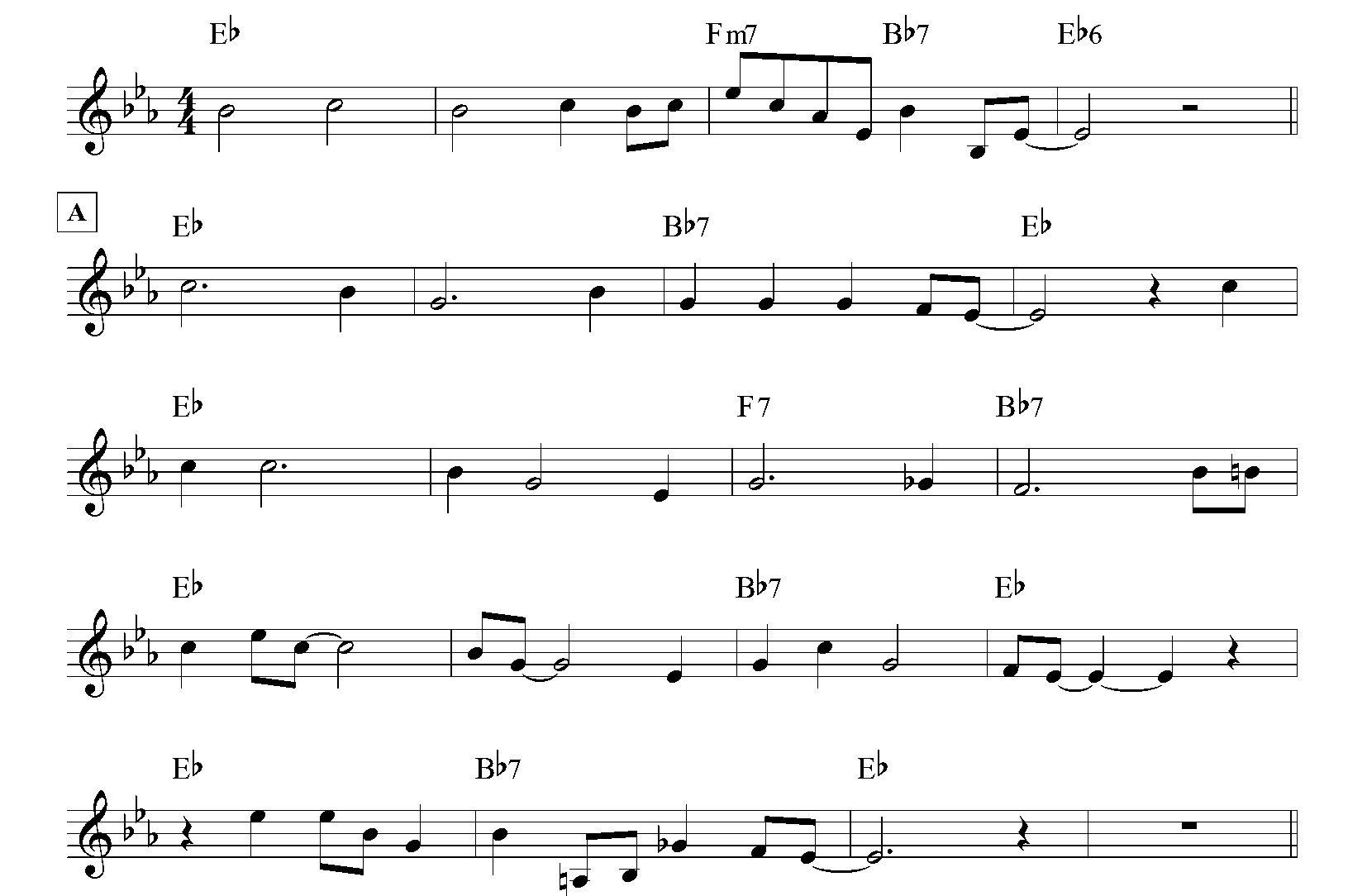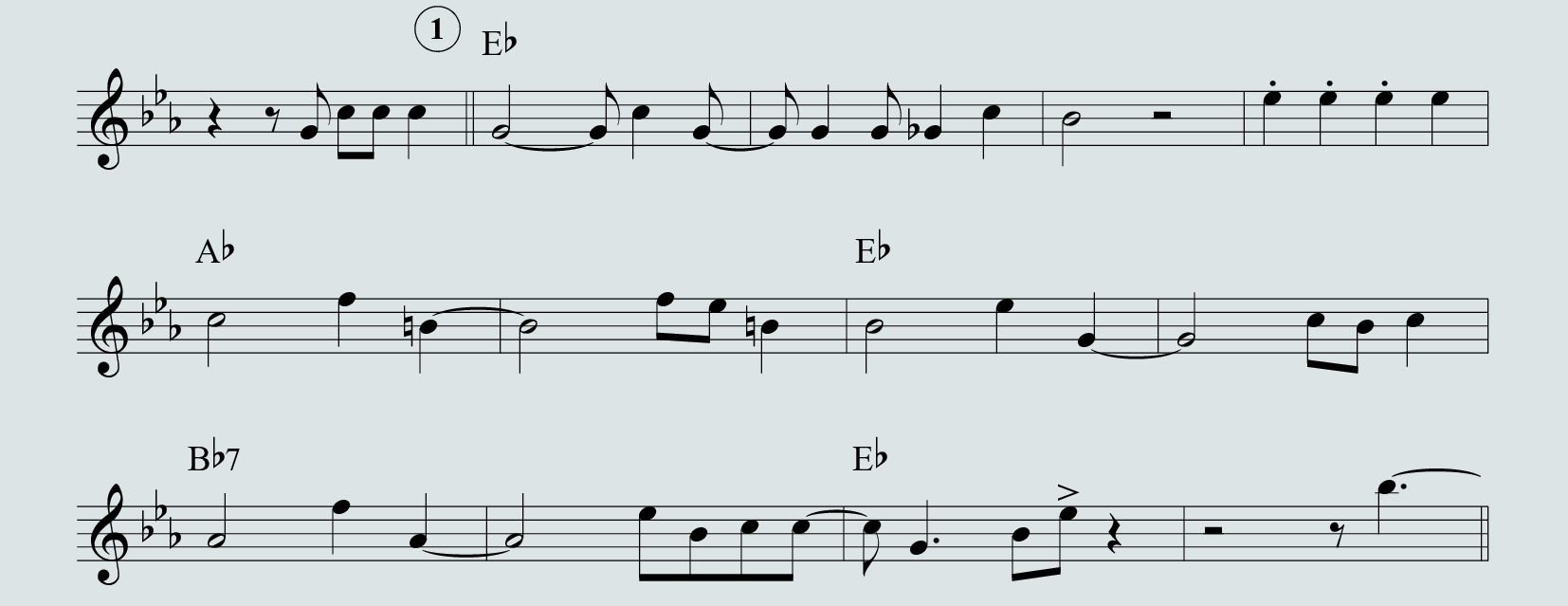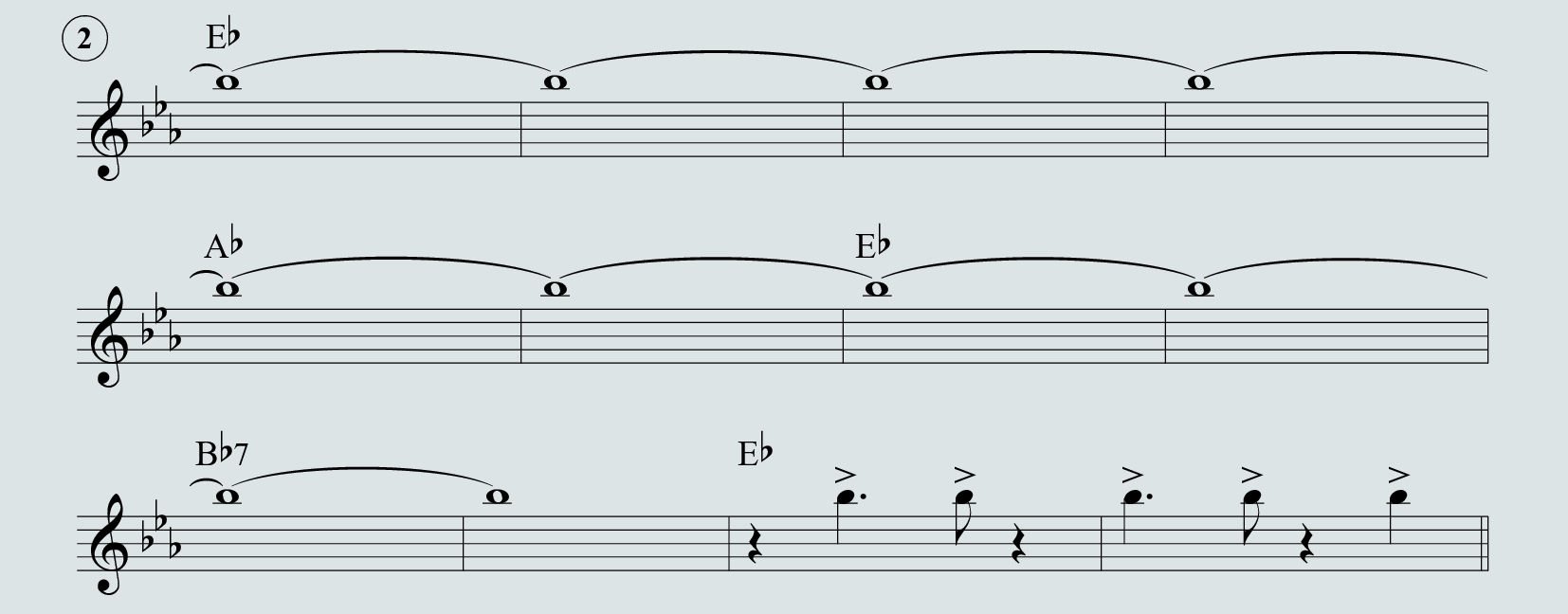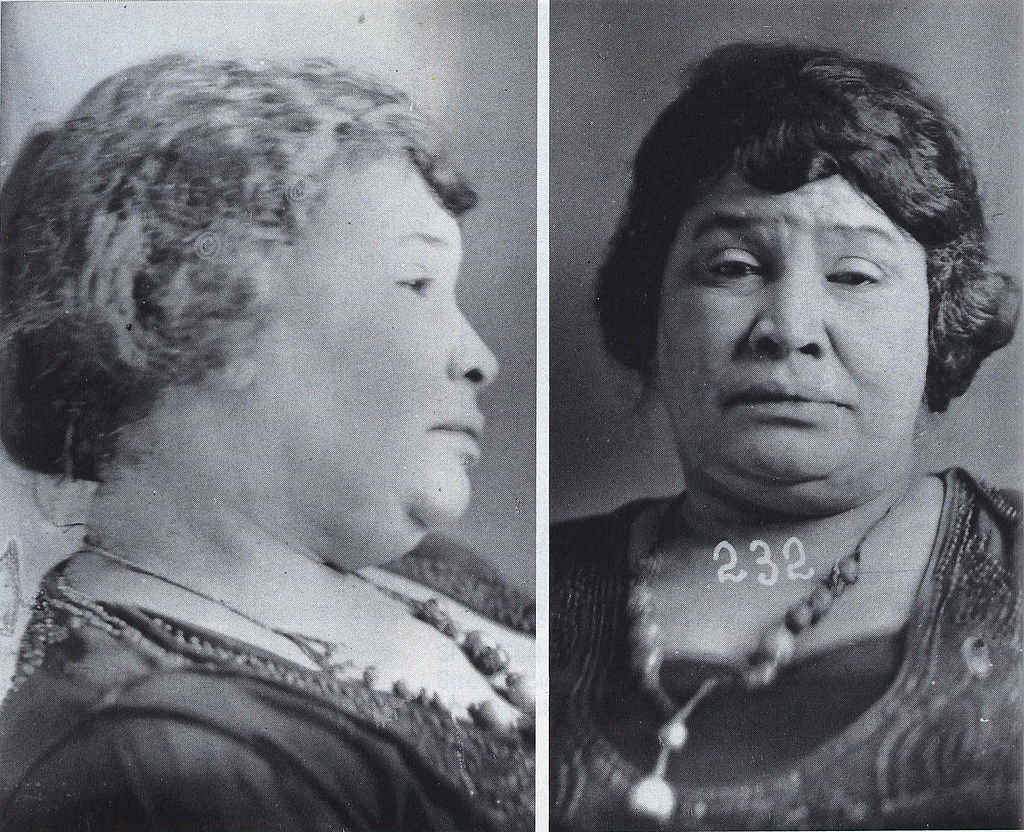[Monday Notes No. 129] Mahogany Hall Stomp is a traditional New Orleans piece dedicated to one of the most famous and luxurious brothels in Storyville. The song is a perfect example of early jazz. Louis Armstrong, with his three blues runs, seems to be explaining how jazz works.
The piece opens with four measures of introduction followed by the main theme [A], developed over simple chords and on a form of 16 measures.

The theme is followed by the series of solos, played on a classic 12-measure blues pattern. The opening part is thus used only as a theme, and not for improvisation.
Let us analyse the solo performed by Louis Armstrong at minute 1’33” with muted trumpet, a true masterpiece and also a jazz lesson in its perfection and simplicity.
In the first chorus, the trumpeter cleverly alternates notes on the downbeat, which almost always coincide with the chord change, and notes on the upbeat. Armstrong renders even the notes on the downbeat propulsive, thanks to his formidable pronunciation that manages to make interesting even the most elementary phrases. Let’s look, for example, at the four E-flat notes that conclude the first line.

The second solo chorus is based on a single note, held for 10 measures and then played again at the end. Once again, Louis Armstrong proves that the effectiveness of a solo does not depend solely on the choice of notes, but also on the way they are played.

The third chorus is based on a two-measure motif, an effective riff which anticipates the big band phrasing typical of the 1930s. The phrase is repeated six times, always the same.

These three choruses demonstrate Louis Armstrong’s ability to use simple elements to great effect. A repeated note, a held note, a riff. Louis Armstrong’s musical vision is crystal clear, obvious and inevitable, like all great music.
The Mahogany Hall was a well-known brothel, as was its owner Lulu White, who was involved in a number of trades other than that of girls. Her mug shot, a document of her arrest for alcohol trafficking, shows a confident woman who had certainly seen (and done) all kinds of things.
The birth of jazz has been excessively associated with the famous red light district of New Orleans. It has now been made clear that jazz was a much broader phenomenon and certainly not limited to the Storyville neighbourhood.
However, these somewhat fictional and colourful accounts help to give us a better understanding of the context in which early jazz musicians performed. Mahogany Jall Stomp tells us a bit about the world in which jazz was born, and the bizarre characters that populated it.
Until next Monday!
download the lead sheet of Mahogany Hall Stomp


